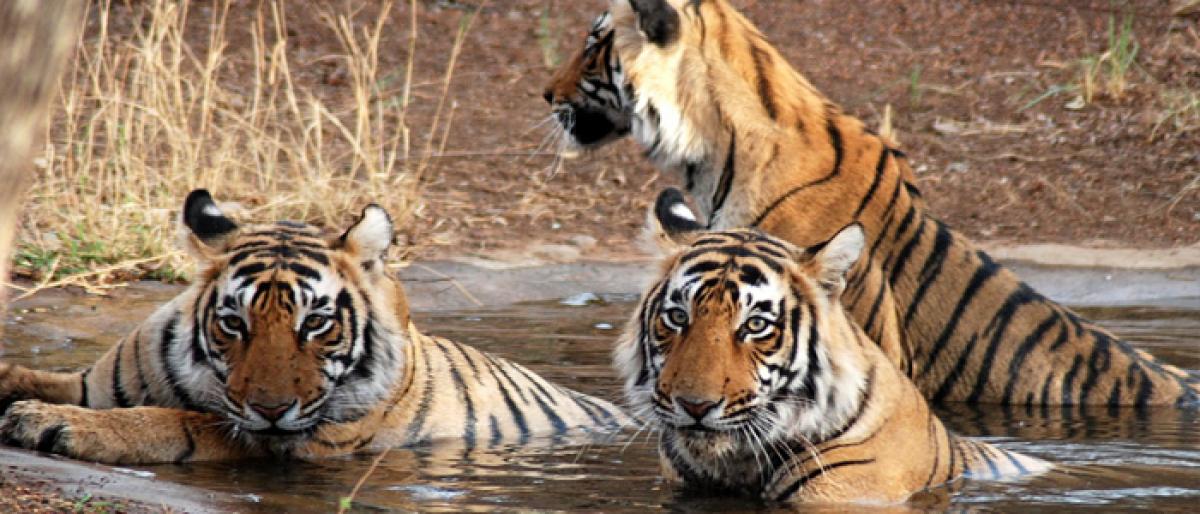Tiger population across Asia to triple: Study

Wild tiger populations in key tiger recovery sites across Asia, including in India, have the potential to triple, contributing up to 15 per cent increase in the global tiger population, a new study said Wednesday Some of the tiger recovery sites cited in the study could be on track to fulfil their highest estimated tiger population capacity within the next 20 years
Wild tiger populations in key tiger recovery sites across Asia, including in India, have the potential to triple, contributing up to 15 per cent increase in the global tiger population, a new study said Wednesday. Some of the tiger recovery sites cited in the study could be on track to fulfil their highest estimated tiger population capacity within the next 20 years, it said. It, however, said this is possible only if effective efforts in anti-poaching and in stabilising prey base for the predator are maintained.
The study, conducted by 49 conservation experts from 10 tiger-range countries, developed site-specific and ecologically realistic targets and timelines for the recovery of tiger populations in 18 tiger recovery sites, identified under WWF's global tiger conservation programme.
The India sites in the study include Rajaji National Park, Nandhaur Wildlife Sanctuary, Valmiki national park in northern India, Manas national park in the east, Balaghat, Achanakmar Wildlife in central India, and Sathyamangalam Wildlife Sanctuary and Tiger Reserve, Anamalai Tiger Reserve and Vazhachal forests in southern India. Eighteen tiger recovery sites from 10 tiger-range countries were selected for the study, which currently support around 165 (118-277) wild tigers, it said.
These sites have the capacity to harbour up to 585 (454-739) tigers in the study's best case scenario, representing an estimated tripling of their current combined population, it pointed out. "We are at a critical juncture for tiger conservation, where we can bring wild tiger populations back from their devastating decline but concerted effort is needed to reach it.
This study has revealed tremendous potential among these sites – although some areas are still lagging behind, particularly in South East Asia, several others are already beginning to experience an increase in wild tigers. "We know this can only happen when there is strong political will, sustained investments, responsive governance and public support – all critical conditions regardless of which site we are looking at," said Margaret Kinnaird, Leader of WWF's Wildlife Practice.
Since the beginning of the 20th century, both the population and range of wild tigers have been estimated to have shrunk by a devastating 95 per cent, due to rampant poaching and habitat destruction. In 2010, the global tiger population reached an all-time low of around 3,200, prompting 13 tiger-range governments to convene and commit to TX2 - one of the most ambitious goals ever committed to for the conservation of a single species.
Lead author of the study and population ecologist at Panthera, Abishek Harihar said, "Each tiger site is unique and requires intensive efforts based on specific plans that are relevant at the site level. This study has clearly laid out different components of a tiger recovery system, with a special focus on recovery sites - areas with high potential for long-term recovery of wild tiger populations. "Our assessment serves as a template to guide planning for population recovery in other sites globally and helps to inform more effective, integrated approaches to tiger conservation."
Increased and eventually stable prey populations are a pre-requisite, while comprehensive systems to reduce the risk of human-wildlife conflict are essential for ensuring safe co-existence among the increased wild tiger populations and local communities, which are also projected to grow in population size, the study said.

















